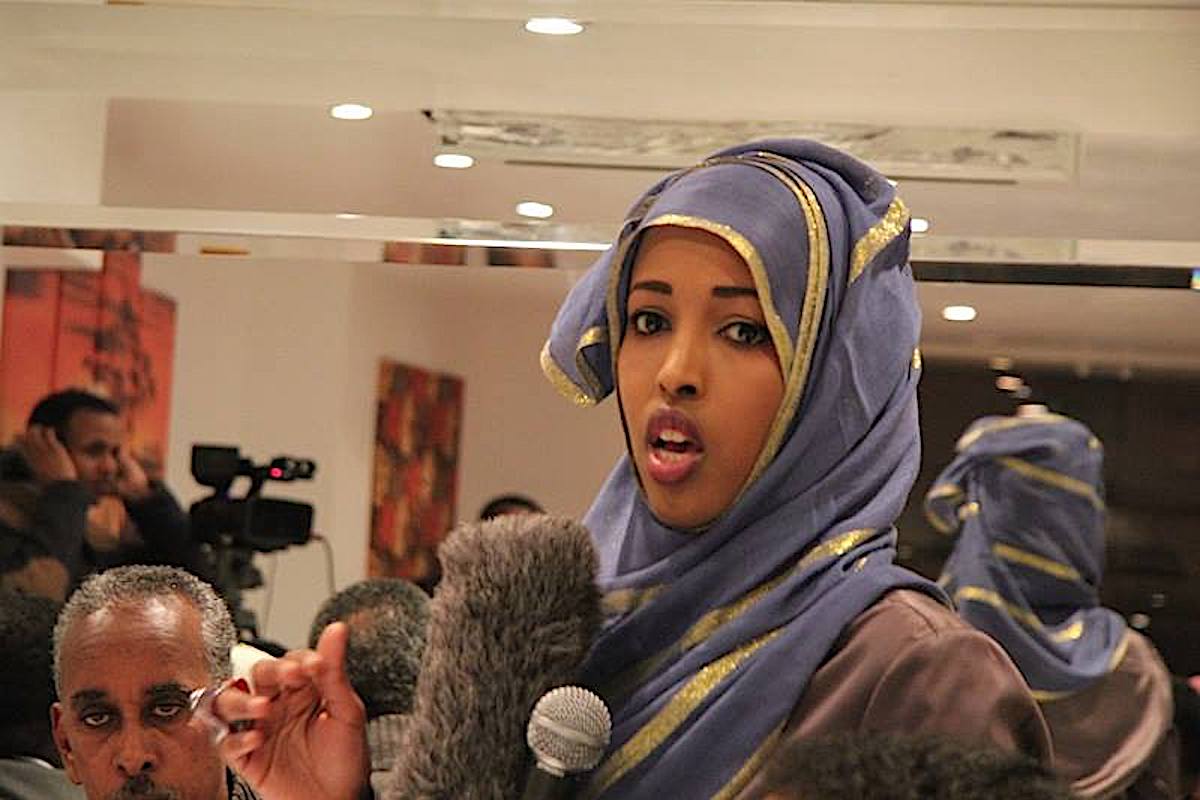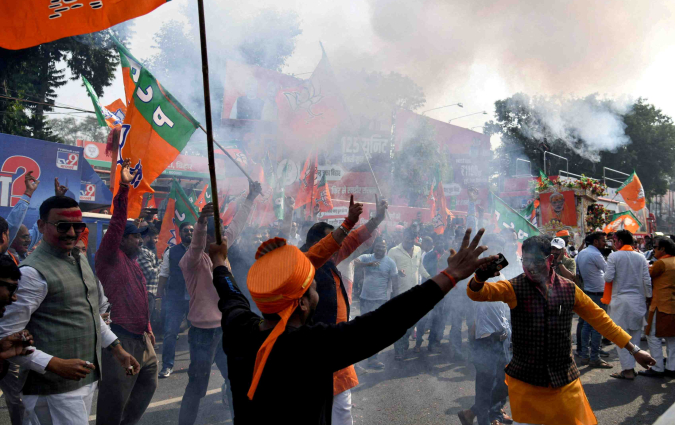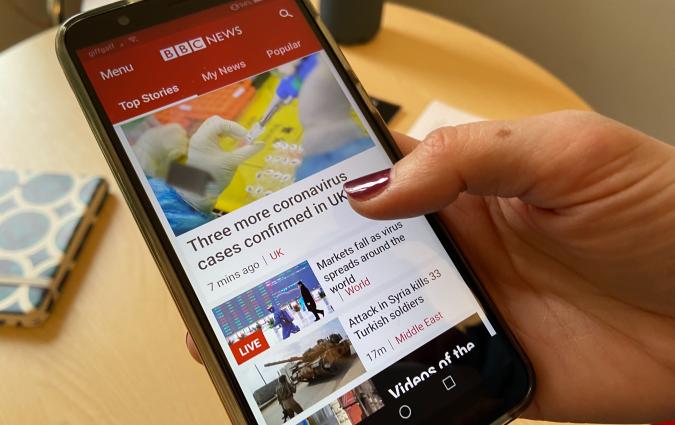Despite abuse and sexism, women journalists in Somalia are fighting back to do their job

Maryan Seylac.
Pursuing journalism is not easy for Somali women. Those who join the profession have conquered numerous obstacles, including secretly studying to avoid facing their families' displeasure. Despite these challenges, many women have established themselves as formidable figures in the press in a country where journalists face threats from both state security agents and armed groups.
One of those women is Fathi Mohamed Ahmed, whose interest in journalism started at an early age after her grandmother made it a habit of listening to BBC radio every day with her.
Mohamed Ahmed is now the editor-in-chief of all-female media outlet Bilan Media, a first of its kind in Somalia. Even though she decided she would be a journalist when she was a child, she says, her family was not up for the idea. So she took a media course in secret, without the knowledge of her own family. “When my mother asked where I was going after school, I told her I was going to a computer school. I was hiding what I was doing because I knew if they found out, they would stop me,” she says.
After eight months, her father discovered she was studying journalism and insisted that she should stop. He told her that journalism would not only destroy her future but would also bring shame to her family. “I insisted on continuing, and they had no choice but to let me do it. They realised nothing could stop me from pursuing journalism,” she says. After completing her training, Mohamed Ahmed was offered an internship at a local media outlet, where she interned for two years.
Maryan Seylac’s career in journalism also started on a similar path. Seylac got attracted to journalism as a child, an interest sowed through the habit of listening to the BBC Somali news service with her father and discussing what they heard.
Seylac began teaching at a local school after completing her education, but she felt that teaching was not her true calling. She reached out to a local radio station and asked if she could work for them and gain experience in radio in the evenings. “I started out by helping in welcoming guests and reading the news. This was so new in Somali media at the time… I was the only female journalist in the city of Baidoa,” she says.
At first, she just read the news and helped with programmes in the studio. But one day an explosion happened, and she was sent to the scene to cover the story. That is how she started her reporting career.
Being the only woman journalist in the area was difficult for Seylac. “Members of the community thought journalism was not a career for a young woman like me, so they were not welcoming. But this is what I wanted to do, and it was something I enjoyed doing, so I persisted. They first outcasted me, but over time they accepted me,” she says.
She focused on stories that other journalists were not pursuing. This made the community see fresh perspectives on important issues that had been overlooked.
An association for women journalists
For a while Seylac remained the only female journalist in her region. As a way to change this, she co-founded in 2006 the Somali Media Women’s Association (SOMWA), whose mission is to empower, encourage and increase the number of women in newsrooms.
“At that time the industry was male-dominated and I felt outnumbered,” she says. “Others did not take me seriously and this affected my confidence. At some point I almost gave up.” She started recruiting and training women interested in journalism. Despite the challenges of war, they’ve managed to train more than 100 women journalists not only from the Baidoa region but from all over the country.
Unfortunately, the organisation has had to shut down a couple of times due to threats from militant groups. Despite these closures, Seylac stresses that training women and increasing their numbers in newsrooms helped transform the kind of stories the Somali media tells.
How Bilan Media transform narratives
This was also the case for Bilan Media, an all-female newsroom launched in 2022. According to editor-in-chief Mohamed Ahmed, Bilan media was launched to give an opportunity for women journalists to focus on subjects that were not getting the kind of attention they deserved, especially issues that are important for women such as women's health, autism and HIV.
Bilan, which means 'bright and clear' in Somali, is made up of six journalists and two interns. These women enjoy editorial independence to decide what stories to cover and how to cover them. This is a first in the country’s news industry, where very few female journalists are in editorial positions. Bilan’s journalists also publish in-depth features and provide an environment to discuss challenges women in Somalia face.
“Our target is to change some of the media narratives in Somalia. Most of the time they focus on conflict and politics. So we try to focus deeply on what's going on in society,” says Mohamed Ahmed.
After being in operation for a year, Bilan Media has experienced some progress in terms of audience reach, but it has also attracted criticism and threats.
Mohamed Ahmed complains that some members of the community don’t take them seriously. “Sometimes you go out and people will tell you that you have not dressed appropriately and it is not good for our culture,” she says. “And that would probably be just because they feel your scarf is smaller.”
Seylac points out that women journalists in the country face a myriad of gender-based violence and sexual harassment online and offline, sometimes on the field and sometimes even in their own newsrooms. Whenever women carry out an assignment, she says, they are harassed and intimidated by individuals who believe that she should be at home doing house chores. “Then they go back to their newsroom and they still face sexual harassment from their own colleagues,” she says.
Seylac points out that women journalists are not granted maternity leave when they are pregnant. Her own organisation monitors and condemns these and other abuses suffered by Somali women journalists within their newsrooms or in the field. “Women journalists in Somalia often have to close down their social media accounts to stop online abuse,” she says.
Threats and arrests
Political unrest in Somalia has greatly impacted journalism in Somalia and the country is regarded as one of the most dangerous countries for journalists in the world. Somalia ranks 141 out of 180 on the RSF’s 2023 Press Freedom Index. According to the CPJ’s 2022 Global Impunity Index, Somalia remains the worst offender for the eighth straight year. CPJ also records that 73 journalists have been killed in Somalia between 1992 and 2023. It is because of these factors that CPJ has considered Somalia a hostile environment for journalists for a long time.
According to Muthoki Mumo, CPJ’s Sub-Saharan African representative, journalists in Somalia face threats from state security and armed militia groups. She notes that the number of journalists who have died in connection to their work in the country is alarming. The data on deaths they collect is broken down into various categories such as crossfire for journalists who might have been embedded in military operations and died in the process. Another category is dangerous assignments, tracking journalists who died while on assignments such as protests. The last category is murder, which reflects a premeditated attack on a journalist because of their work.
“When you analyse the 73 cases further, you find that 48 journalists have been murdered in Somalia from 1992 to 2023,” says Muthoki. She adds that out of the 48 journalists who have been murdered only 10 got some form of justice. The rest of the killings remain impune.
“When a journalist is killed, it is not only devastating to their family and colleagues,” Mumo says. “It also has reverberations on the broader community because when one is grievously injured or is fatally attacked, it is human that you will start asking yourself if you should be doing things differently.”
Mumo says that these indicators don't paint a full picture, particularly for female journalists. For instance, if you check journalists killed in Somalia by gender, it indicates that only five women journalists have been killed. This might mislead one into thinking that female journalists are better off and are not as threatened as their male colleagues.
“Do we have less women killed because women are less at risk? Or is it simply because of the population of women in journalism or because of the lack of opportunities to cover some assignments?” she asks.
CPJ has recorded various threats and violations against women journalists in Somalia. There has also been an increase in threats and arrests as women carry out their assignments. One of the cases is the assault of Fardowso Mohamed Sahal who was attacked by police officers while reporting on a protest. One officer hit her on the face while another shoved her to the ground, pointed a gun at her, and threatened to kill her. Another incident occurred when security forces in the neighbour state of Somaliland arrested independent journalist Naciima Abdirahman Yusuf.
“While we see arrests that last for longer than a day getting a lot of attention, what worries me is that shorter arrests are becoming more common. Someone is taken to a police station for a few hours. Maybe someone forces them to delete footage or to delete photos," Mumo says “While that might not get the kind of attention that longer arrests get, it is human nature that you might change your behaviour to report on different issues or places, and at the end of the day that's a form of self-censorship.”
What’s next
The lack of funding for women-led projects slows down the growth of women in media in Somalia. According to Seylac, SOMWA’s funding challenges have slowed them down and made it difficult to offer training and support to more female journalists. She would like to see international organisations offering them more support.
“At the moment, when a case of abuse happens, the only thing we can help our colleague with is emotional support. We can’t offer her legal support,” she says.
Despite these challenges, the three Somali women journalists I spoke with for this piece are hopeful. “My desire is to see more women journalists in managerial positions,” says Seylac. “I want to see more women as editors and programme producers. And not just for any programme but programmes that have huge audiences. I also want to see a news outlet owned by a woman.”
Mumo says that both the Somali government and media owners should play a role in this transformation. “Media owners should start creating an environment where female journalists can thrive,” she says. “This means putting in place protocols and systems that ensure female journalists do not feel unsafe and harassed, and feel comfortable to speak up, propose ideas, pitch stories and see those stories through.”






